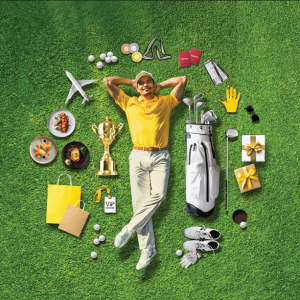Golfers Common Injuries
Upper Or Lower Crossed Syndrome: What Can You Do About It?
It doesn’t matter what handicap level a golfer has, we all have our own daily aches & pains to deal with. If correct precautions and simple fixes are not implemented this can lead to long term injuries down the road.
Golfers generally suffer from the same few areas of pain:
- Lower back
- Wrist
- Shoulder/Elbow
The repetitive motion of swinging a golf club does not help; however, the biggest root cause is actually not the golf swing itself, but what we do in our daily activities.
Habits have become increasingly worse over the past few decades.
- Use of mobile phones
- Commuting
- Sleeping patterns
- Working long hours sitting at a desk
- General lack of exercise & movement
If action is not taken simple day to day tasks such as putting on shoes or reaching overhead will become more strenuous as we get older.
Whilst we perform different tasks, the body position we find ourselves in is always very similar.

This leads to a host of postural issues
- Rounding of the upper back caused by a weak neck & tight pectorals, a tight upper back and weak mid back. This is known as the Upper Crossed Syndrome.
- Arched lower back caused by tight hip flexors & lower back muscles. This leads to weak abdominals & weak glutes. This is known as the Lower Crossed Syndrome.
All these can lead to negative tendencies in the golf swing, such as sliding, lack of rotation in the upper body & early extension to name a few.
With Upper Crossed Syndrome there will be:
- Lack of mobility in the upper body to make a full backswing
- Poor shoulder mobility & stability, not allowing the arms to fold correctly in the backswing and follow through.
With Lower Crossed Syndrome, certain setup and swing tendencies will be noticeable.
- “S” Posture at the hips – Noticeable arching of the lower back, weak glutes & abdominals
- Unable to perform a correct turn from the lower body causing the body to Slide or Sway if the glute muscles are not strong enough.
So how do we fix these issues….
When addressing the upper body, normally mobility will be the main issue, typically through the thoracic spine (upper back) & lack of stability in the shoulders.
If you struggle to make a full turn in the back swing or you are unable to complete your follow through, then it is likely mobility is lacking in the upper back. This exercise will help resolve the issue.
Exercise 1 – Reach Back
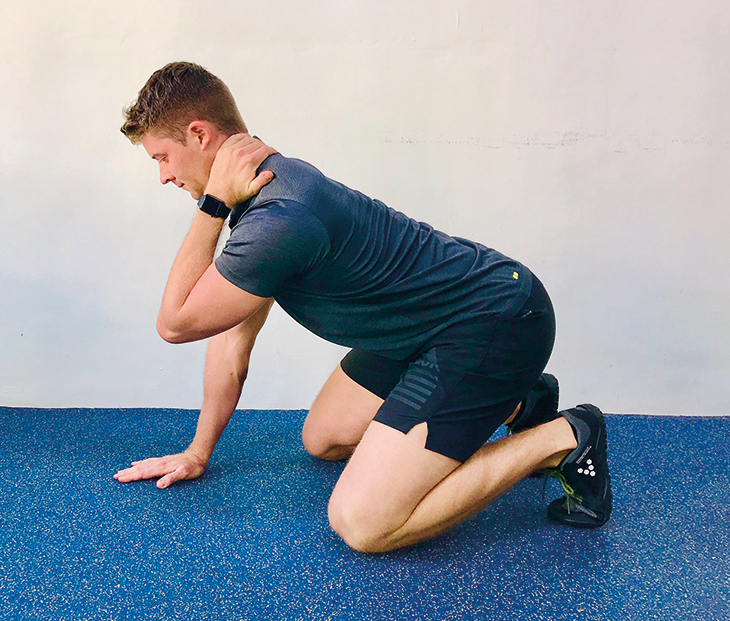
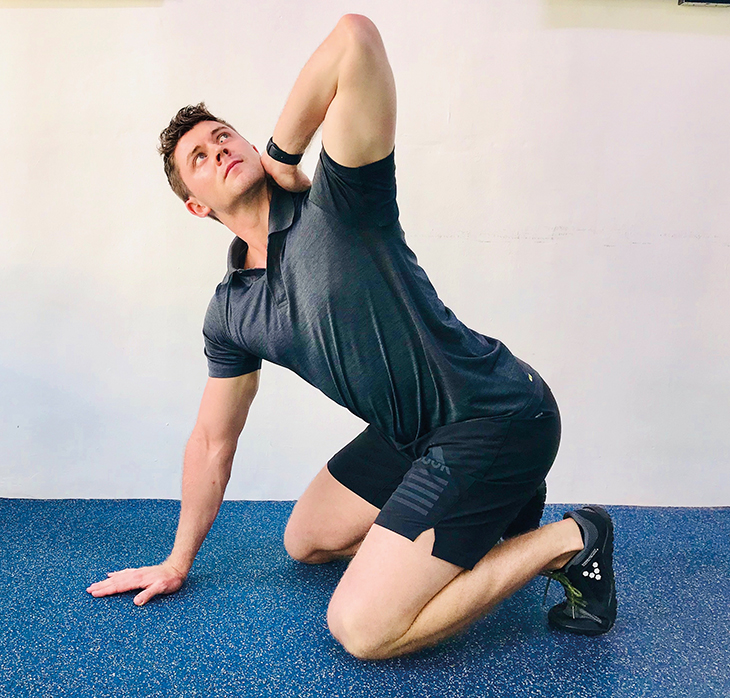
Explanation-
- Set up on all fours, sitting back onto your feet so the hip is lower than the knees
- Place both hands in front of you in the centre of your body
- Take one hand off and place it behind your neck
- Keeping your body centred, raise the elbow up to the sky, allowing your head and eyes to follow
- Be sure to fully exhale at the top, repeating 10 times per side
Something I find quite common with amateur golfers is issues with posture at set up.
I see a lot of curved lower backs which is detrimental to making a good swing. Some players may just need a correction from their swing coach; however for others there may be a physical limitation. If that is the case the next exercise will help understand what a “neutral” spine is and help gain back mobility and core control.
Exercise 2 – Happy Cat Angry Cat
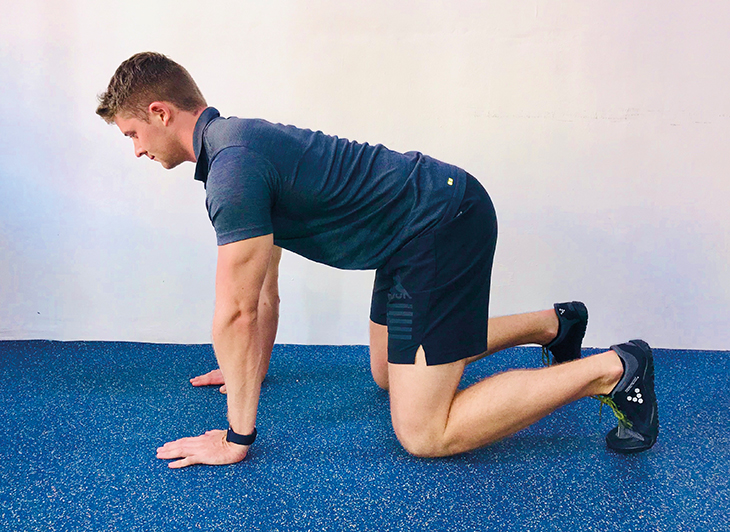
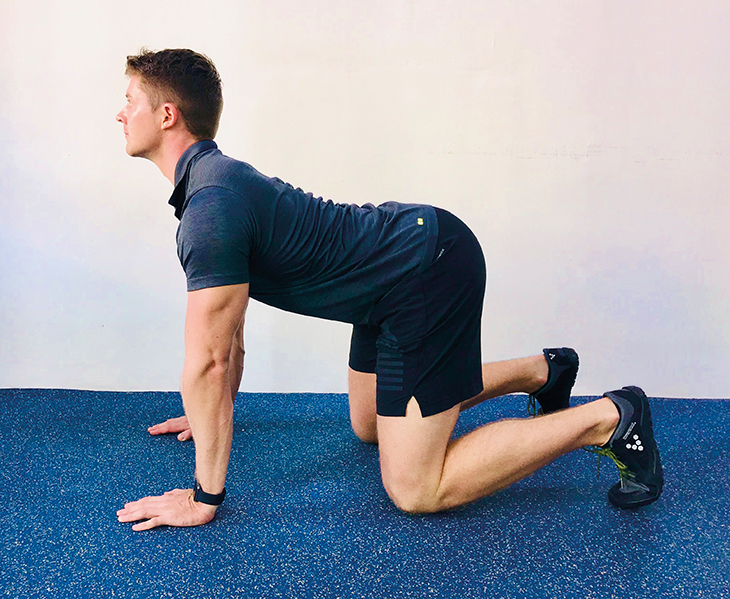
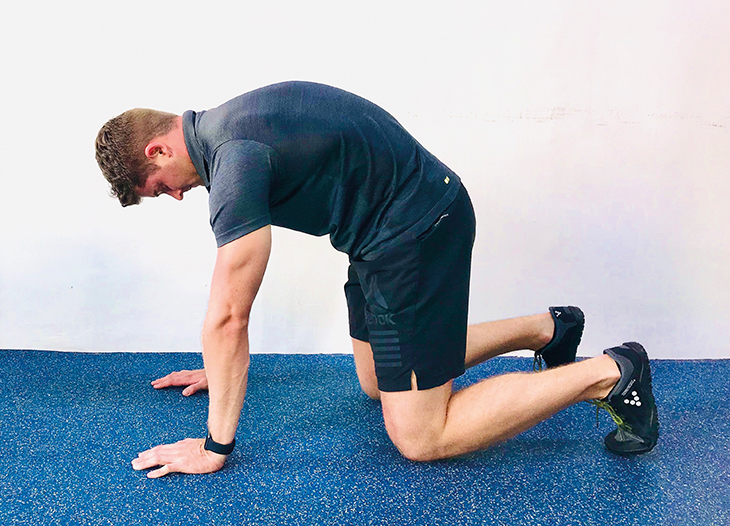
Explanation –
- Set up on all fours, knees under hips & hands under shoulders
- Perform this move slowly & controlled
- Start by arching the lower back, pointing the bum up to the sky.
- Then moving to the mid back & finally the upper back
- Then reverse this, controlling from the core, tuck the hips under rounding the back slowly all the way up.
- Finishing by push up and away through the hands
- Perform this 5-8 times
These are just two examples of exercises which can assist your mobility and which can be built into a comprehensive fitness programme to improve your game.
More posts

A TRUE OG IN STREET-STYLE GOLF
03 Apr 2025
TO THE MANOR BORN
08 Jan 2025